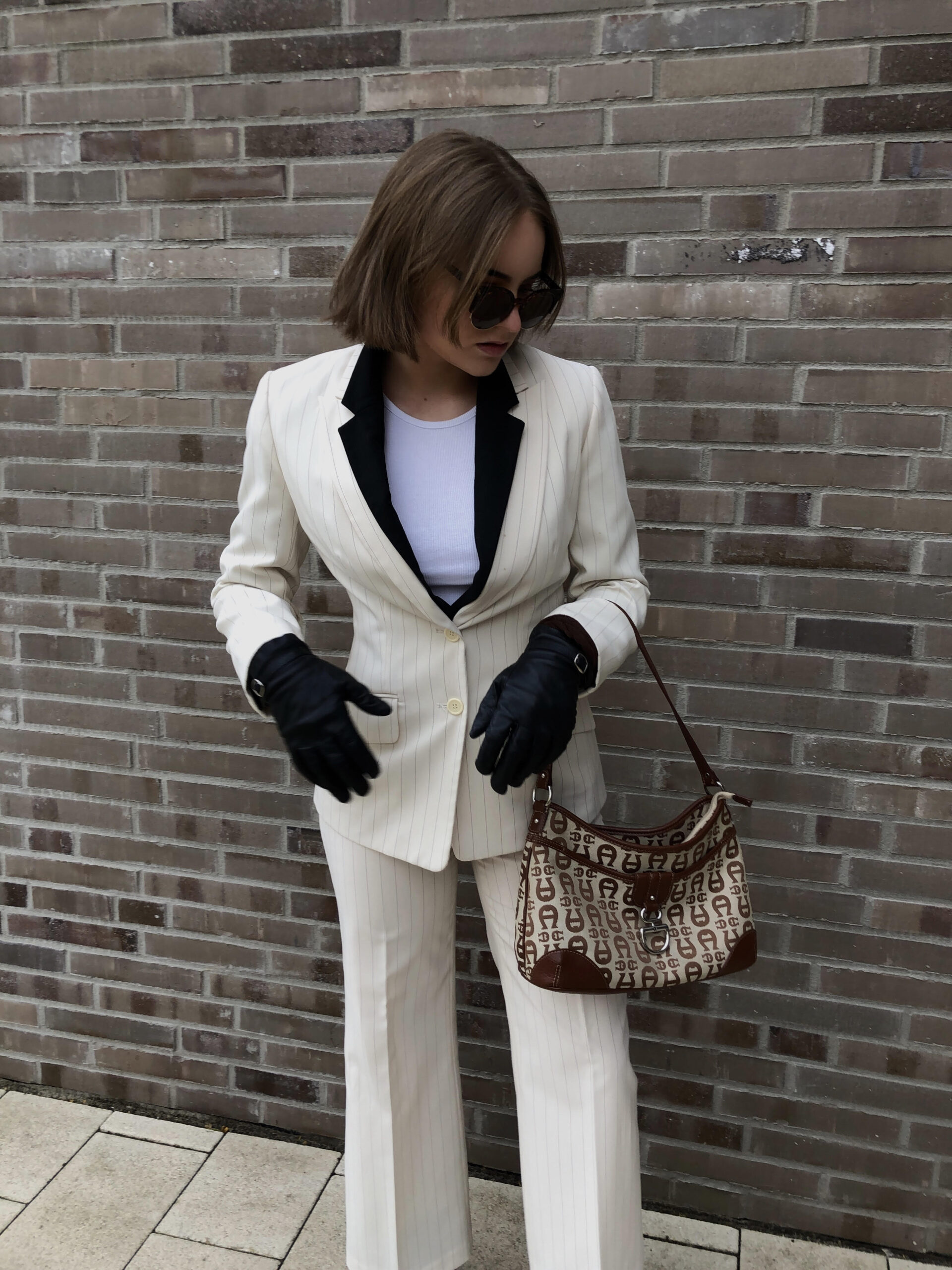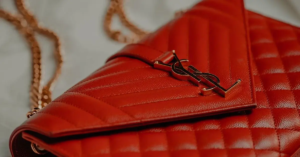The “old money vs new money” discussion goes far beyond just social standing, even influencing unique fashion trends. Each of these two classes have their distinct ways of showcasing their wealth and status, both rooted in prosperity. #OldMoney #NewMoney #FashionTrends
At its core, old-money fashion is all about subtle elegance and timeless appeal. It reflects a refined lifestyle built on generations of tradition and understated luxury. In contrast, new money fashion exudes a more flashy and attention-grabbing style, often showcasing the latest trends and brands. With the new money, there’s this desire to assert one’s newfound riches, making a bold statement in fashion. So, while old and new money styles stem from prosperity, they display varying flair and sophistication.
Old Money vs New Money
Old and new money fashion styles differ in various ways, from their origins to the clothing items typically associated with each class. Let’s explore the critical differences between these two styles that make them unique.
Firstly, old-money fashion has a more aspirational high-society aesthetic, often focusing on classic and timeless pieces. By contrast, new money fashion tends to be more extravagant and flashy, incorporating trendy and designer items that often showcase the wearer’s wealth.
Another difference between the two styles is the colors and patterns they favor. Old money style gravitates towards conservative and muted colors, choosing timeless patterns like houndstooth, plaid, or argyle. Meanwhile, the new money style is bolder and more outgoing, often opting for vibrant colors and eye-catching patterns or prints.
Quality and attention to detail are other distinguishing aspects of old and new money fashion styles. Old-money individuals are more likely to invest in well-crafted, long-lasting garments made from high-quality materials. UniquOn the other hand, unique money individuals might prioritize the brand name and logo over the quality or durability of the clothing.
Moreover, the presentation of outfits and grooming in both styles differs. Old money stylists prioritize neatness, with companies being well-tailored and ironed, shoes polished, and hair neatly groomed. In contrast, the new money style may not pay as much attention to these details, focusing more on the designer tags and bold choices to make a statement.
Old money fashion also values tradition, often adopting styles passed down through generations or upholding family dress codes. New money fashion, conversely, is more open to exploring and embracing recent trends or styles, sometimes even merging them with their clothing choices.
Lastly, accessories play a role in differentiating between old and new money styles. Old money people are likelier to wear understated jewelry and elegant, timeless watches. In contrast, unique money individuals may favor oversized, flashy jewelry pieces or watches and might even opt for branded belts, bags, or shoes to further assert their status.
Old Money Fashion

The Old Money aesthetic is deeply rooted in tradition, emanating a sense of elegance and understatement. Unlike the more ostentatious New Money style, Old Money fashion is about maintaining a refined and classic appearance.
Old Money style typically features timeless, high-quality clothing made from natural fabrics like wool, silk, and cashmere. These materials portray luxury and provide durability, ensuring the age of the garment gracefully over time.
Neutral and muted colors are often favored in Old Money fashion, with hues such as navy, gray, beige, and white dominating the palette. This discreet color scheme allows the wearer to blend in and exude quiet confidence.
In terms of clothing choices, investment pieces are essential. Think tailored suits, shirts, and dresses that fit impeccably, as well as high-end accessories like leather belts, silk ties, and pearl necklaces. Many Old Money enthusiasts opt for designer items with subtle branding or vintage items passed down through generations.
Perhaps one of the most significant aspects of Old Money fashion is attention to detail. Each outfit is carefully considered, focusing on grooming and accessorizing to elevate the look. Hairstyles are classic and tidy, while jewelry and watches are minimalistic and tasteful.
New Money Fashion
New Money fashion is typically characterized by bold choices, bright colors, and an eagerness to showcase wealth. This style often incorporates loud prints and luxurious materials, emphasizing the desire to make a strong statement about one’s financial status. In this section, let’s explore the critical aspects of New Money fashion that set it apart from the Old Money style.
One of the most noticeable differences between these two fashion styles is the prominence of designer labels and brand logos. New Money fashionistas are more inclined to wear clothing and accessories with visible designer logos, making it clear that they can afford high-end items. At the same time, Old Money individuals often prefer more subtle, timeless pieces that focus on craftsmanship and quality.
When it comes to color, New Money fashion is known for its vibrancy and experimentation. These individuals aren’t afraid to stand out, so their wardrobes often include bright colors and eclectic patterns. In contrast, Old Money fashion favors more muted tones and understated elegance.
New Money fashion also tends to embrace the latest trends, with individuals investing in cutting-edge styles to show that they are current and relevant. From oversized streetwear to avant-garde couture, this fashion style is all about being at the forefront of what’s happening in the industry.
Another distinctive element of New Money fashion is the use of extravagance to impress. This could include elaborate jewelry, ostentatious materials like fur and gold, or technology integrated into clothing and accessories. The goal is to make a statement about one’s wealth and lifestyle, turning heads. However, this can sometimes veer into excess and may be seen as tacky or overdone.
New Money people often opt for high-impact ensembles to stand out when dressing for events. These might include daring silhouettes, revealing cuts, or even themed outfits. While Old Money individuals might also attend the same circumstances, their approach to dressing is more likely to be classic, refined, and understated.
Influential Designers and New Money Brands


When discussing old money vs. new money fashion styles, it is essential to mention some pivotal designers and brands that have significantly contributed to them.
Renowned designers like Emilio Pucci have influenced the old-money style with their eccentric yet timeless creations. Stars like Elizabeth Taylor and Jacqueline Kennedy Onassis have donned pieces from Pucci, marking it an old-money go-to brand.
Similarly, labels like Burberry, Ralph Lauren, and Brooks Brothers represent timeless old-money styles, being recognized for their clean, simple, and high-quality designs. In contrast, new money fashion is characterized by a more ostentatious, daring, and novelty-driven approach.
In the new money category, established designers like Paco Rabanne have been known for their space-age-inspired creations in the 1960s, as cited by Insider. Rabanne carved a niche for futuristic aesthetics and groundbreaking designs that resonated with the new money values of innovation and novelty.
Besides Rabanne, modern brands like Balenciaga, Off-White, and Gucci symbolize the new money approach with striking pieces and streetwear-inspired fashion. These brands often play with bold prints, oversized silhouettes, and attention-grabbing accessories.
But how do the two styles compare in their approach to accessories and jewelry? Global Glam mentioned that old-money fashion favors subtle, legacy-driven pieces over flashy, expensive statement items. Family heirlooms and custom-made pieces not available for public purchase are typical in the old money style. Meanwhile, new money fashion opts for extravagant and prominent accessories, like oversized necklaces or bold logos.
Cultural Impact and Perceptions
The differences between old and new money fashion are deeply rooted in cultural perceptions and societal values. Old money fashion embodies tradition, understated elegance, and timeless style, while new money fashion tends to be more flashy and trend-focused.
Old money fashion often centers around classic pieces that last for generations, emphasizing quality over quantity. This reflects their upbringing, where wealth has been inherited and is seen as a responsibility to preserve family values and legacy. In this context, dressing well is a way to show respect and honor for one’s heritage.
On the other hand, new money often embraces a more extravagant and attention-grabbing style. Clothing and accessories are more expensive and elaborate, showcasing their newfound wealth and success. It’s common for new money individuals to adopt the latest trends in an attempt to display their financial achievements and social mobility.
These contrasting styles play a significant role in shaping cultural attitudes and social perceptions. Old money style is often perceived as sophisticated, refined, and tasteful, leading to respect and admiration for their adherence to tradition. However, this can also lead to criticism for being conservative or out of touch with contemporary fashion trends.
In contrast, the new money style tends to garner an ambivalent response. While some may admire the bold, risk-taking fashion choices and view them as expressions of individuality and a drive for success, others may perceive these as a misguided attempt to fit in or as an ostentatious display of wealth.
FAQ:
Is new money better than old money?
No, the value of money is not determined by its age or origin but rather by its purchasing power and stability in the economy. New and old money can hold value, depending on inflation and market demand.
Does old money look down on new money?
Yes, old money is often seen as more prestigious and established, leading some to look down on those with new money. However, this is not always the case and can vary depending on individual attitudes and values.
Do old money families still exist?
Yes, old-money families still exist today. Typically, these families have inherited wealth and social status over several generations, often through established businesses or inherited assets such as land or property.
What is the difference between old money and new money aesthetics?
Old money aesthetic is often associated with understated elegance, traditional styles, and quality craftsmanship. In contrast, the new money aesthetic is often related to flashy displays of wealth, designer labels, and trend-driven fashion.
How does old money behave?
Old money families tend to behave conservatively and maintain a low profile, valuing discretion and privacy. They often prioritize education, social connections, and cultural refinement and may participate in philanthropic activities.
How can you tell if someone has old money?
It can be challenging to tell if someone has old money as they often maintain a low profile and value discretion. However, signs may include attending prestigious schools, owning historic properties, and establishing social connections. Additionally, their clothing and possessions may display understated elegance and quality craftsmanship.
What makes a woman look rich?
This question has no definitive answer, as looking rich can depend on individual style and preferences. However, some common signs may include wearing high-quality fabrics and designer labels, accessorizing with fine jewelry and luxury handbags, and maintaining a well-groomed appearance.
u003cstrongu003eHow can you tell if someone is upper classu003c/strongu003e?
It can be challenging to tell if someone is upper class as it can depend on various factors such as income, education, and social connections. However, signs may include attending prestigious schools, owning property in desirable neighborhoods, and participating in exclusive social events. Additionally, they may display refined tastes in art, culture, and fashion.
Disclosure: We only recommend products we would use ourselves, and all opinions expressed here are our own. This post may contain affiliate links that we may earn a small commission at no additional cost to you.
If you liked this blog article about the comparison: Old Money vs New Money, don’t forget to follow us on Pinterest so you don’t miss any more fashion and beauty news.





